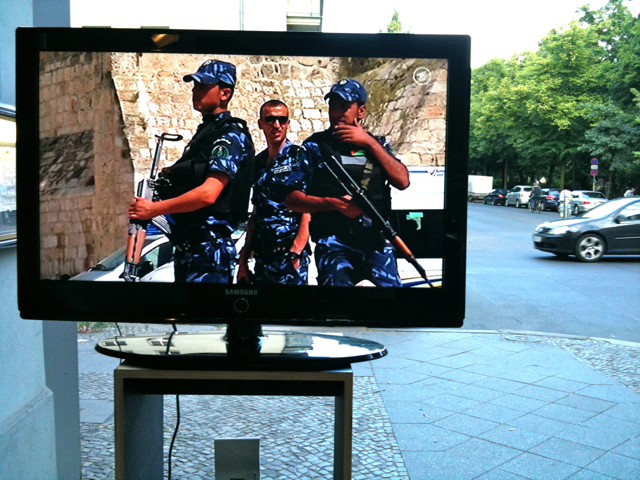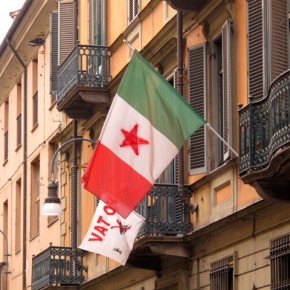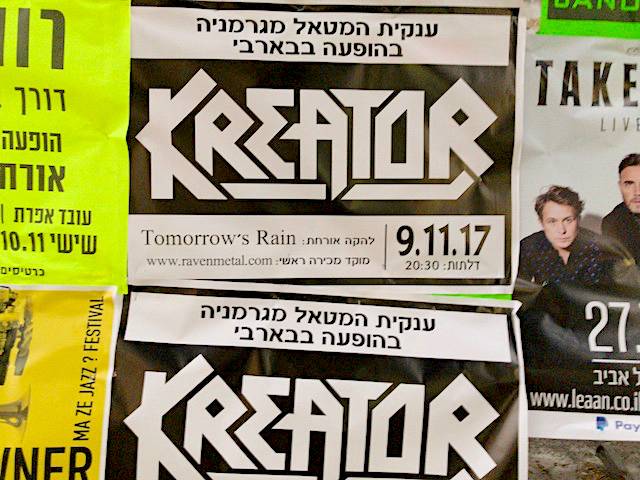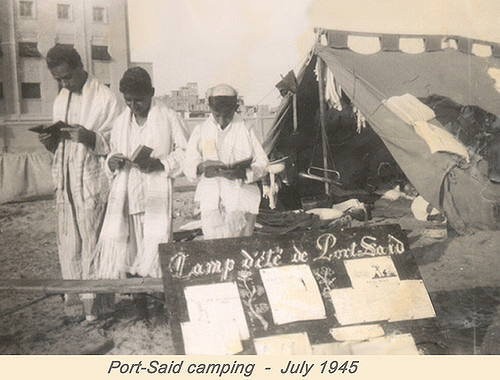Bibi has seen better days. Election dramas, victories for Fatah and Hamas, and a diplomatic backlash have kept Netanyahu busy. “E-1,” the name of the thin strip of land that connects Jerusalem with the eastern settlement of Ma’ale Adumim has once again become a prominent phrase after he announced that Israel would move forward with construction plans there.
In understanding the controversy over E-1, we need to look at it from two perspectives. The first is the obvious one, the issue everyone is raising: building up E-1 renders a Palestinian state in the West Bank unviable, as it largely bisects the territory, something that would be upsetting to most of the world as it would seem to imply that there is no solution to this destabilizing conflict. The other view has the potential to demonstrate that the whole two-state process has been a charade to begin with: that bisecting the West Bank has been Israel’s plan for decades, and foreign leaders who looked at a map even once had to know this. In that case, the support for a peace process has always been about supporting a process, not about supporting peace.
To begin with, there’s no doubt that Israeli settlements in E-1 moot any real possibility of a viable Palestinian state in the West Bank. Ma’ale Adumim sits far out to the east, close to the Jordan River and forces anyone trying to drive from one side of E-1 to the other to go a long way around to avoid crossing into Israeli territory, if it should become fully part of Israel. Palestinian Authority President Mahmoud Abbas called construction in E-1 a “red line” and you can see why.
Without a diplomatic option to the two-state solution, and without the ability to think of that solution in any way other than the formulation that evolved from the Oslo process, the international community must see E-1 construction as the death knell it is for that beleaguered formulation. The difficulties of simple travel for commerce and community that exist under occupation would become entrenched in the very physical nature of a Palestinian state.
World leaders, whether they’re in Washington, Berlin, London, Moscow, Beijing, Riyadh, Amman or Doha know very well that if the established framework of a two-state solution becomes so mooted by Israeli settlement construction that the world has to give up on it, the regional pressure cooker that is the Palestinian issue starts to move toward an explosion. No doubt, in that case, the Palestinian movement will move to demand its rights within the Israeli state, but that new framework will take years, perhaps decades, to garner diplomatic support from the West and the Arab states that cannot afford to break with the US and Europe. But those governments have no one but themselves to blame. This problem has been there form the beginning—before it, in fact.
In a 2009 report, Israeli human rights groups Bimkom and B’Tselem sum up the threat of building in E-1 to any hopes Palestinians have for a capital in East Jerusalem: “In addition to thwarting the prospects for the establishment of a viable Palestinian state, construction of residential neighborhoods in E1 will augment the physical and functional disconnection between East Jerusalem and Palestinian communities of the rest of the West Bank. Residential construction in E1 will result in East Jerusalem being surrounded from the north, south, east, and west by Jewish neighborhoods. Thus the separation of East Jerusalem from the rest of the West Bank – a process that has been going on for decades, and which has greatly accelerated with the construction of the Separation Barrier around the city – will be finalized.”
On that level, it’s easy to understand the consternation at Israel’s move. But if we examine some other arguments, we start to see that there might be another, more subtle level to this issue. And that examination starts with Netanyahu himself.
Ha’aretz paraphrased Bibi’s very correct assertion “…that every Israeli government has approved expansion of Jewish neighborhoods in Jerusalem, and what can be called peripheral neighborhoods of Jerusalem and Tel Aviv. Netanyahu also said that the E-1 corridor between Ma’ale Adumim and Jerusalem would be included in Israeli territory as part of any final peace agreement.” Of course it would be—how else would Ma’ale Adumim be connected to Israel? And Ma’ale Adumim is one of the settlement blocs that “everybody knows” would be part of Israel in any final status agreement.

I recall a day when I was standing with an Israeli colleague just outside of Ma’ale Adumim, on its eastern side, where Israel has already made plans for extensive building. Jericho loomed behind us. And I wondered aloud how Israel believed there could be a viable Palestinian state with Ma’ale Adumim sitting in the middle of it. My colleague started spinning ideas about various bridges and tunnels, all of which sounded like clutching at straws. Just standing there, it was obvious that a Palestinian state on the West Bank and the continued Israeli presence at Ma’ale Adumim were not compatible realities.
The issue is not E-1, it is Ma’ale Adumim, and this was the intention all along. Consider the also perfectly accurate words of Ha’aretz’s resident settler, Israel Harel: “The decision to link Maaleh Adumim to Jerusalem was taken many decades ago. Avraham Ofer, who was Building and Housing Minister on behalf of the Alignment, saw its future as a suburb of Jerusalem and not a separate town.” This isn’t a “recent development” which pragmatism dictates must be accounted for. No, this was an obstruction planned by Israel from the very first.
Of course, Ma’ale Adumim was not set up to block a Palestinian state. In the mid-1970s, there was no thought of such an outcome, except among radicals and dreamers. But Israel was still concerned that it would have to withdraw from the West Bank and return it to Jordanian rule, as, at that time, Jordan still claimed that land. As had been the case since 1967 Israel wanted a contingency plan that ensured that it would keep Jerusalem, in case it was forced to make major concessions on the West Bank. The strategy to do so was based in the creation of “Greater Jerusalem,” an integrated metropolitan area that Israel would develop. Ma’ale Adumim was to be the border of that Greater Jerusalem. This is the notion to which Harel refers.
Indeed, the Bimkom/B’Tselem report conclusively supports this argument. The report’s summary states: “Already in late 1974, the government decided to build Jerusalem’s new industrial zone in Mishor Adumim, as well as a workers camp nearby. A few months later, in 1975, Israel expropriated 3,000 hectares to build Ma’ale Adumim. More land was subsequently expropriated to enable the settlement’s expansion, to pave roads, and to develop other public infrastructure in the city…It appears that in Ma’ale Adumim, the government decided to permanently expropriate the land because it viewed the area as an integral part of Jerusalem that would forever remain under Israeli control.”
This is years before Oslo, years before the Clinton Parameters, and years before the 2004 letter from George W. Bush to Ariel Sharon where Bush assured Sharon that Israel would not have to relinquish the major settlement blocs. The monkey wrench in the works of the two-state solution was in place more than a decade and a half before a two-state solution was even a serious consideration. Is this something the international community, which has been peddling the notion that a viable Palestinian state was a real possibility, wants its various citizens to know?
This is what Bibi is blowing the top off of, and it is at least as much the source of the anger being directed at him as the very real potential consequences of building in E-1. Those consequences are serious; they include greatly magnifying disruption of Palestinians traffic, the complete isolation of East Jerusalem from the West Bank, the mooting of the two-state solution and the forced displacement of some 1200-1300 Bedouin who live in the area. By no means should we think that the current flap over E-1 is not a real concern.
But we need to also be mindful that it isn’t something that Netanyahu is just popping up with all of a sudden. When the current plans were first moved forward, the Bush Administration voiced concern, and since 2005, those plans have been frozen. All Bibi is doing now is expressing an intention to reactivate them. It has not actually happened yet, so it can be stopped, and stopping it does matter.
But it is important to recognize, once and for all, what Ma’ale Adumim is, and what the controversy over E-1 actually reveals. There has never been a realistic chance at a two-state solution and there can’t be one as long as it is based on a vision where Ma’ale Adumim is still an Israeli “neighborhood.” It is a colony, and one that was built for a specific purpose: to make sure, at first, that Israel would maintain control of all of Jerusalem and, later, that a viable Palestinian state on the West Bank was not a serious possibility.
Any two-state solution that includes Gaza (as any such solution that will be acceptable to any significant number of Palestinians must do) already has a contiguity problem that is quite challenging. The West Bank, though, must be a viable unit, and this realization has been rhetorically acknowledged by every government involved in any way in the “peace process.” Yet the presence of Ma’ale Adumim has never been acknowledged as an obstacle; on the contrary, it was virtually given to Israel on a guaranteed platter.
The E-1 controversy shines a light on what a sham the peace process has been for two decades. Earlier today, I began reading a new book by former US Ambassador Daniel Kurtzer, Pathways to Peace: America and the Arab-Israeli Conflict. In the first essay, William Quandt, a member of the National Security Council in the Richard Nixon and Jimmy Carter administrations, wrote that the two-state solution had never been given a real chance. He’s right, and Ma’ale Adumim shows just how unrealistic and phony the efforts have been.
Photographs courtesy of Joel Schalit






Mitchell, I kept searching for ways to refute this and couldn’t come up with any, except that there is a difference between an outright “scam” perpetrated by cynics and wishful thinking from people who meant well. The State Dept. has long that what you said about Ma’ale Adumin was true. It has been schooled by Dani Seidman, among others, for decades. But some of its people tried their utmost to work around it…
Jewish people as Afrikaaners. Palestine as bantustans. A “one state solution” means a two caste society, just like exists in Israel right now. Jews up top and Arabs down below.
Assuming Israel can get over being a racist colonialist state, there is no problem of contiguity. The distance between the occupied West Bank and Gaza is a short distance, if Israel were not all about stealing land and resources and keeping Arabs as second class citizens, traffic could easily flow between Gaza and WB.
This essay neatly avoids the truth that without the welfare bundle Israel gets from the US every year Israel would get the illegal colonists out of EJ and the WB in 72 hours.
Minus a two state solution, with Israel returning of stolen water and resources, whatever may befall Israel has been well earned.
Thanks for the comment, Dan.
Danny Seideman is terrific, of course, and plenty of staffers, not just at State, but also in the military, the White House and even some congressional offices, might fall into the “meant well” category. Those I would not put in there are senior leadership figures in the US, Israel, the PA, Europe, and the Arab League. You know, all the people who actually made the decisions. Moreover, I’ve discussed this with many people who were in government at the time (in the US, Israel, and the PA) and my impression was that most who realized this would not have done anything differently if they could have made the decision. My point would be more that if the word “scam” misses the mark it is only because it is hard to point to one person or group coordinating the effort. “Charade” then might be better, but the simple fact is that once it was taken as read that Israel was going to keep Ariel and especially Ma’ale Adumim, there was no longer a 2-state solution. And although that was never even formally implied until the Clinton Parameters, that document was based on discussions that had gone on well before Camp David. Given that we can reasonably assume that Netanyahu was never serious (and assumption is not all that necessary, there’s enough documented evidence from his first term as PM) about peace, that leaves…what, exactly, for a period where there was any seriousness about 2 states? Rabin was never sold on the idea of a Palestinian state in the abstract and never had any intention of giving up Ma’ale Adumim, as he himself stated blatantly in his final speech. Was Peres willing to consider giving up MA? I find that hard to believe. So, ultimately, there was never a serious thought toward a true, viable 2-state solution, and the entire thing was a show. Certainly a charade, and I feel very comfortable calling that a scam.
“This essay neatly avoids the truth that without the welfare bundle Israel gets from the US every year Israel would get the illegal colonists out of EJ and the WB in 72 hours.”
Yeah, because I’ve never written about that.
This essay “buys into” the common jargon that the only peace worth considering is a peace that a present or imaginable future Israeli government would agree to without coercion.
But, without coercion, Israel will pursue its present course, one state undemocratic, anti-Palestinian.
OTOH, with sufficient international coercion (diplomatic, cultural and sport, travel, and [finally] trade), any Israeli government could be brought to take such useful steps as the removal of some or all settlers (as a Palestinian supporter, I prefer “all”), as the destruction/removal of some or all settlements, including especially the big ones near the Old City, the equitable sharing of water, ending the blockade of Gaza.
Israel being Israel, such pressure will undoubtedly need to go beyond words to actions, but writing on the wall may be discernible to Israeli governments even when engraved lightly.
Without something more than the “mere words” which have failed for 64 yerars, there is no hope of a “just and lasting peace” as per UNSC 242.
“This essay “buys into” the common jargon that the only peace worth considering is a peace that a present or imaginable future Israeli government would agree to without coercion.”
No,it doesn’t. In fact, it doesn’t address that question at all. Nor would such a stance be at all consistent with what I’ve written in the past. One is left to wonder if you actually read the piece, and one doubts it.
Just because no Israeli Prime Ministers indicated a willingness to give up Ariel or MA doesn’t mean that it was impossible, at certain junctures since the early ’90s, to conclude there was a chance–with a combination of carrots and sticks–to wrest one of them (certainly not both) from Israel’s grasp as part of a truly comprehensive, final settlement. I remember when a large percentage of people in Ariel indicated a willingness to leave if they got compensation, and people like Abu Vilan tried to raise money to make that possible. I wouldn’t call it a scam or a charade on the part of well-meaning people who pursued two viable states, rather than one state and a collection of Bantustans. I would call it a quixotic quest, against very daunting odds. I wouldn’t consider people –including national leaders– who are trying to achieve the Millenium Development goals, which are probably impossible, to be participants in a “charade.”
Also, part of the conventional Zionist narrative is absolutely true. There used to be a “peace camp” in Israel that conceivably could have been mobilized to gain (more) political power and support the kinds of borders and economic relationships that would have given Palestinians a real state. The second intifadeh destroyed it, and it has not been reconstituted. Who knows what would have happened to the Israeli political establishment, and to Israeli-Palestinian relationships, and to the settlements, if that camp hadn’t been decimated…Even if the Israeli leaders you rightly condemn had remained in power, it is not certain that they would have retained the same red lines…
“with a combination of carrots and sticks–to wrest one of them (certainly not both) from Israel’s grasp as part of a truly comprehensive, final settlement.”
Without their both going, I don’t think that there could be a genuine two state solution that would hold among the Palestinian population. One of the strangest and most enduring obstacles to a two state solution has been the unwillingness of Israel or its supporters in the US to recognize that the Palestinians were and still are willing to give up all but twenty two percent of what they consider their historical homeland. Arafat showed a willingness to settle for a serious shared Jerusalem including holy sites, etc.
Part of what “destroyed” the Israeli peace camp was Ehud Barak’s strange statement that Israel has no “partner for peace.” That little meme combined with Ariel Sharon’s march on Haram Al-Sharif had something to do with the downfall of the peace camp in Israel. I have yet to hear any remotely reasonable answer to the question as to why Barak allowed Sharon to go there surrounded by hundreds of Israeli police and security personnel.
I think Barak killed the Labor Party which in turn left the peace camp with no where to go electorally. I think his actions had something to do with the second intifada. That and maybe the fact that the settlements mushroomed during the period of “negotiations” might have had something to do with it.
I wonder what the peace camp in Israel was thinking while those settlements kept expanding. Did they not know their own society well enough to see the changes occurring within it?–including that settlers were moving into the army as soon as the Oslo Accords were signed? What did they think was going on from 1993-2000?